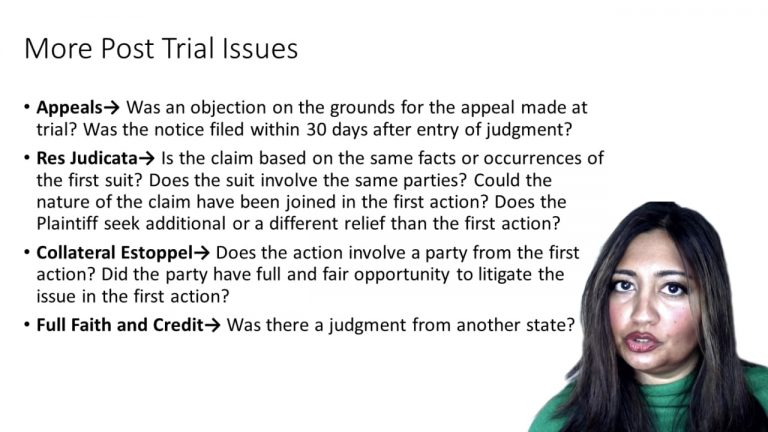SmartBrief
Confirm favorite deletion?
Civil Procedure Keyed to Yeazell
Unitherm Food Systems, Inc. v. Swift-Eckrich, Inc.
Citation:
546 U.S. 394 (2006)Facts
Plaintiff claimed that a patent of Defendant was invalid because Plaintiff’s president had invented the process six years before. Plaintiff sued, alleging that Defendant had violated the Sherman Antitrust Act by attempting to enforce a patent obtained by fraud. Defendant moved for judgment as a matter of law under FRCP Rule 50(a), asking the district court to dismiss the case based on insufficiency of evidence. The court denied the motion and sent the case to the jury, which returned a verdict for Plaintiff. Defendant appealed to the Circuit Court of Appeals for the Federal Circuit, arguing that the evidence was insufficient to prove an antitrust violation. However, Defendant did not renew the motion for judgment as a matter of law after the verdict, pursuant to Rule 50(b), or move for a new trial, pursuant to Rule 59. Plaintiff argued that since Defendant had failed to renew its motion under Rule 50(b) as a party would typically be required to do after an unfavorable verdict, the circuit court could not consider the insufficiency-of-evidence claim. Defendant took the position that renewal of the motion was optional. The circuit court noted that it must apply the precedent of the relevant regional Circuit Court (the Tenth), under which Rule 50(b) was indeed optional. The circuit court found the evidence insufficient to support the jury’s verdict, so it reversed the verdict and ordered a new trial. Plaintiff appealed to the Supreme Court.
Only StudyBuddy Pro offers the complete Case Brief Anatomy*
Access the most important case brief elements for optimal case understanding.
*Case Brief Anatomy includes: Brief Prologue, Complete Case Brief, Brief Epilogue
- The Brief Prologue provides necessary case brief introductory information and includes:
Topic:
Identifies the topic of law and where this case fits within your course outline.Parties:
Identifies the cast of characters involved in the case.Procedural Posture & History:
Shares the case history with how lower courts have ruled on the matter.Case Key Terms, Acts, Doctrines, etc.:
A case specific Legal Term Dictionary.Case Doctrines, Acts, Statutes, Amendments and Treatises:
Identifies and Defines Legal Authority used in this case.
- The Case Brief is the complete case summarized and authored in the traditional Law School I.R.A.C. format. The Pro case brief includes:
Brief Facts:
A Synopsis of the Facts of the case.Rule of Law:
Identifies the Legal Principle the Court used in deciding the case.Facts:
What are the factual circumstances that gave rise to the civil or criminal case? What is the relationship of the Parties that are involved in the case.Issue(s):
Lists the Questions of Law that are raised by the Facts of the case.Holding:
Shares the Court's answer to the legal questions raised in the issue.Concurring / Dissenting Opinions:
Includes valuable concurring or dissenting opinions and their key points.Reasoning and Analysis:
Identifies the chain of argument(s) which led the judges to rule as they did.
- The Brief Prologue closes the case brief with important forward-looking discussion and includes:
Policy:
Identifies the Policy if any that has been established by the case.Court Direction:
Shares where the Court went from here for this case.
Topic Resources
Topic Videos
 2m 29s
2m 29s 3m 56s
3m 56sTopic Outline
